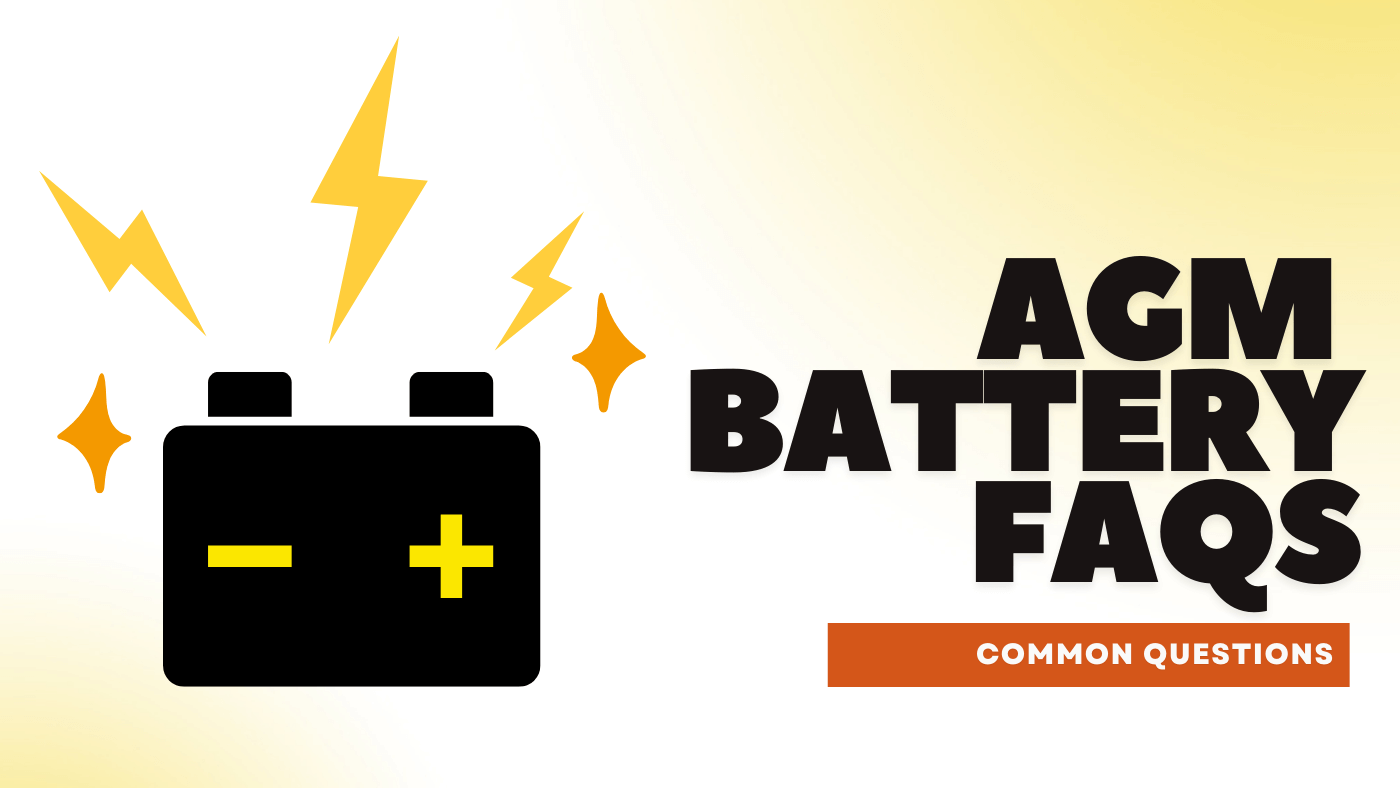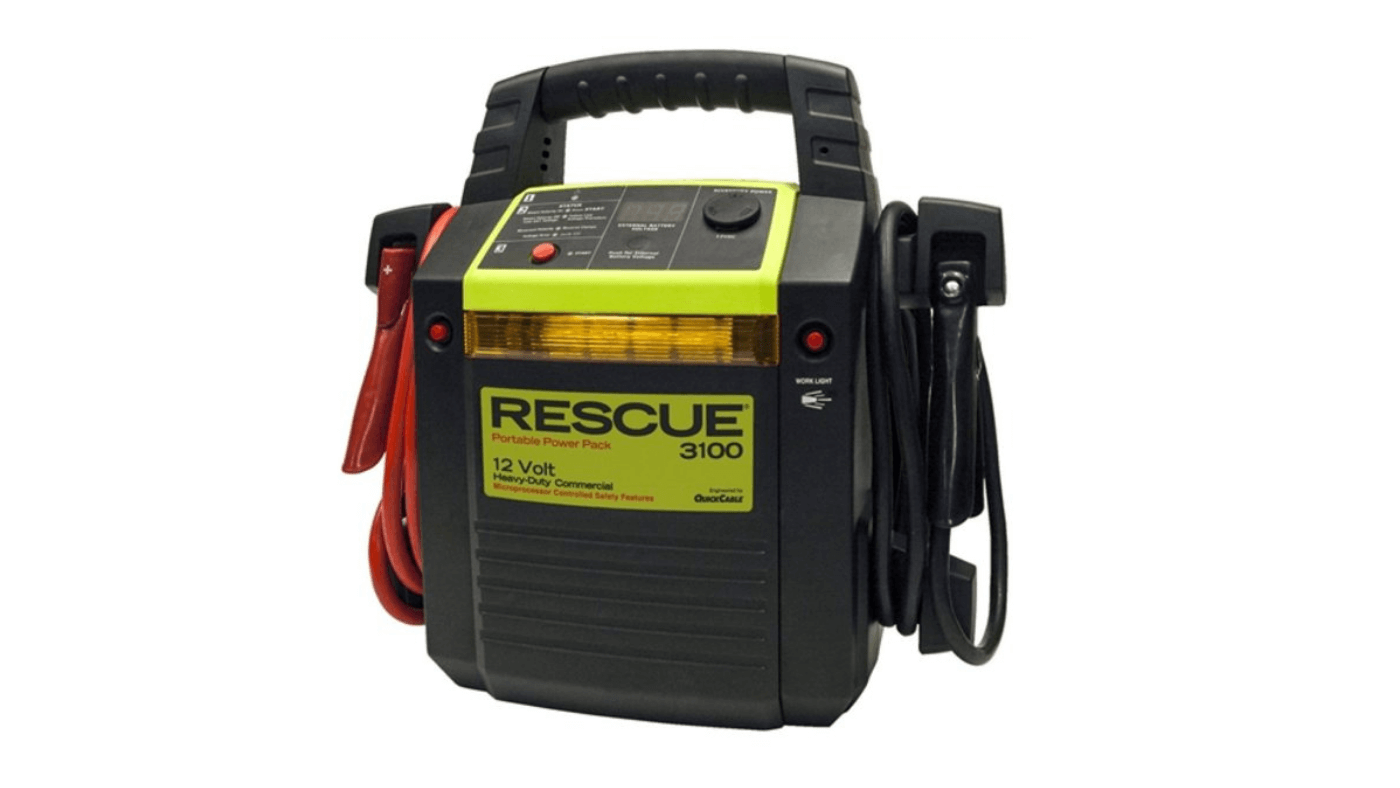
AGM Battery FAQs - Common AGM Battery Questions
How Long Do AGM Batteries Last?
AGM (Absorbent Glass Mat) batteries have become increasingly popular in various applications due to their robust performance and low maintenance requirements. However, a common question among users is, "How long do AGM batteries last?" The lifespan of an AGM battery can vary significantly based on several factors, including usage patterns, maintenance/environmental conditions, and quality. Understanding these factors can help users maximize their battery's lifespan and get the most value from their investment.
Usage Patterns:
When talking batteries, usage patterns refer to how the battery is charged and discharged. Like all other battery chemistries AGM batteries will have a sweet spot on the DoD graph of where you can get the maximum efficiency and longevity out of the battery. DoD refers to the depth of discharge - how far down you are draining the battery before charging back up. AGM batteries are unique in that they are capable of both starting and deep cycling - they are a true dual purpose chemistry.
Each battery manufacturer is a bit different in the construction and purity of the materials used to build their AGM batteries. I always recommend to all my clients to refer to the AGM batterie’s spec sheet for the DoD information. The below screen shot is off of a Leoch LDC series AGM battery - a hard core deep cycle series battery.
As you can see, the graph charts out the cycle life expectation of the battery versus the depth of discharge its frequently subjected to. At the 50% DoD level you can expect over 1200 cycles. This means that if you were to only drain the battery down 50% - use half of its available capacity - then you can repeat that process around 1200 times before the battery needs to be replaced.
Maintenance & Environmental Conditions:
AGM batteries are not cheap - especially the ones actually worth purchasing. Maintenance plays a huge role in the overall lifespan of a battery. Maintenance gets very specific depending on the application the AGM battery is installed into, but the basics come down to the below:
- Temperature - Above Freezing, Below 80 Degrees
- Charge Level - AGM batteries love to stay charged, a maintainer is always recommended
- Connection Check - Check the terminal connections at least once a year
Environmental conditions play a large role in AGM batteries used in renewable power or battery backup systems. These larger batteries typically last for 8+ years and can go even longer if the operation environment is temperature controlled. Heat is the number one killer of batteries as it causes the most damage in the least amount of time.
Quality:
The quality of the battery is also a good indicator of the expected life span. Purchasing a cheap general purpose battery for an application like a UPS system will yield you poor results. You always need to keep in mind what your end goal is, and how important the application is to your situation. For example, if your purchasing an AGM battery for a company battery back up system and you like your job - chances are you going to go with an industry leader like EnerSys or Deka. The quality of these brands has set the bar for the rest of the industry and the system is guaranteed to work when you need it to every single time.
On the other hand if the battery is for an electric toy that your just trying to get up and running to sell, the a cheaper general purpose one makes the most sense.
How To Test an AGM Battery?
To get an accurate test of your AGM battery you first need to know what type of battery is it. AGM has three main categories - starting, deep cycle, and hybrid. I will go into some quick details about each testing method:
Testing a Starting AGM Battery:
The unit of measure thats of interest to you for a starting battery is how much immediate power the battery is able to produce, so you will be testing for CCA. CCA stands for cold cranking amps, and the rating on many AGM starting batteries will be published right on the battery itself via the manufacturers labels. Almost every new car in production as of the writing of this article has an AGM battery installed right out of the factory and auto shops are quickly adapting their testing equipment to meet the new demand.
Testing A Deep Cycle AGM Battery:
The unit of measure for the deep cycle category is the reserve capacity - either stated as an AH (amp hour) rating or in RC. Reserve capacity, commonly referred to as RC, is the amount of time in minutes that a 12V battery can run before dropping to 10.5V. RC is the industry standard for marine deep cycle AGM batteries and can be only be tested using a battery discharger. Its a lengthy processes with a specialized piece of equipment. Golf cart repair shops and marinas are likely to have these units on hand for battery testing.
Testing A Hybrid AGM Battery:
AGM hybrid batteries are typically rated in both CCA and RC. At our shop here we only test the CCA of a Hybrid battery on a pass or fail basis and have pretty good results with this single test alone. You can however have both the RC test and the CCA test done on the battery to confirm if it falls below its manufacture rated specs.
How To Desulfate an AGM Battery?
We get asked this one a lot, and the answer isn’t something you can do immediately if you don’t have the right charger. Desulfating an AGM (Absorbent Glass Mat) battery can help restore its performance if in fact sulfation or acid stratification has occurred. It requires the use of a special smart charger that has a pre-programmed algorithm to get the job done. A few of the models that we recommend are below:
NOCO:
CTEK:
The charger models listed above will all have a selectable desulfation mode that can be manually engaged by the user - this mode is called repair mode for the NOCO series chargers, and Desulfation mode for the CTEK brand. Both of these companies are very well regarded in the charger industry and will increase the performance of a sulfated battery.
It's important to note that severe sulfation may be irreversible, and not all AGM batteries can be successfully desulfated. If the process doesn't work, recycling and replacing the battery may be your only option.
How Long To Trickle Charge AGM Battery?
Here’s our basic breakdown of charging guidelines for AGM batteries -
Battery Charge Time Formula:
There is a very simple mathematical formula to figure out how long to charge a battery that we teach to many of our clients. The two things that you need to know are the capacity of the battery, and the out put of your charger in amps. The formula is Battery Capacity (in AH) divided by the output of the charger (in A).
Lets say that you have a 100 amp hour AGM marine battery you needed to charge. The trickle charger that you have at your disposal is a 4 amp output. The equation will read out like this: 100 / 4 = 25, it will take a full 25 hours to full charge your 100 amp AGM marine battery. I can already hear you asking the question “what if the battery isn’t run all the way down?”. Then it will take less time to charge the battery. It always tough to gauge the DoD or depth of discharge of a battery to get the exact amount of time it will take to re-charge a battery. Knowing this simple formula will give you a solid starting point and a realistic time frame if you are starting with a dead battery.
Using A Smart Charger For AGM Batteries:
I do always recommend a smart charger is used when charging an AGM battery. These chargers are running charging algorithms that are designed specifically with an AGM batteries needs in mind and will make sure that its not over or under charged. These chargers also maintain the correct voltage output during the charging process for the batteries to efficiently absorbed the amperage being fed to them without gassing the battery. Gassing of an AGM battery is caused by either extreme heat, or by high voltage being forced into the battery and will significantly shorten the batteries usable lifespan.
Smart chargers are required if you really want to maximize the lifespan of your AGM battery. The brands that we have tested and currently use in our shop to test, repair, and charge customer batteries around the clock are NOCO and CTEK. Both of these brands are solid performers with an excellent track record and proven performance. I highly recommend you begin your search with these brands when looking for a solid AGM trickle charger.
In Conclusion
To conclude my FAQ on AGM batteries I wanted to re-iterate that a good AGM battery is not cheap, and if you want to protect your investment then you need to pay attention to usage and maintenance of your battery. Get yourself a smart charger, these bad boys can not only desulphate your battery but they can also properly charge it and maintain it during any off-season you may have. If you have any other AGM related battery questions please reach out to us at sales@techbatterysolutions.com, I’ll be happy to answer!




